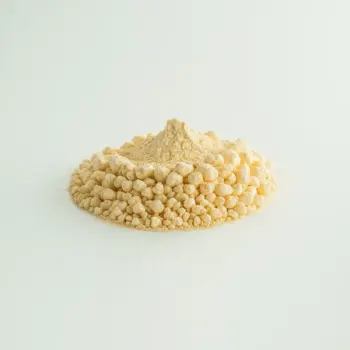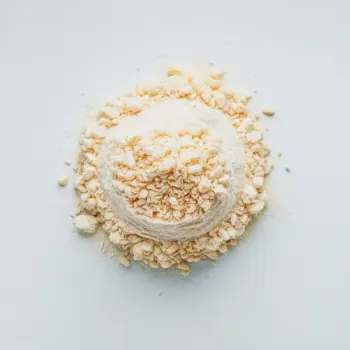Cornstarch and Rice Flour are two distinctive thickeners used in cooking and baking, each offering different textures and finishes for sauces, gravies, and coatings.

Cornstarch is a fine, powdery starch that is extracted from corn kernels. It's primarily used as a thickening agent in cooking and baking, offering a clear, glossy finish to sauces and fillings.

Rice Flour is a form of flour made from finely milled rice. It is used as a thickener, a baking ingredient, and in gluten-free recipes. It provides a delicate texture and is often used in Asian cuisine.
Cornstarch and Rice Flour differ in taste, texture, and origin. Cornstarch has a neutral flavor and creates a shiny, translucent finish, whereas Rice Flour has a slightly grainy texture and a more opaque, matte finish. Cornstarch is derived from corn, while Rice Flour is made from either white or brown rice.

Your ultimate Recipe Box, Meal Planner, and Cooking Class all in one
Best for thickening clear sauces and gravies, Cornstarch provides a glossy sheen and smooth texture. It's ideal for stir-fries and sweet sauces like fruit glaze. Rice Flour works well for creamier sauces and gravies with a more robust texture. It's a go-to for gluten-free recipes or when a less glossy appearance is desired.
Used in combination with flour, Cornstarch can lighten the texture of cakes and shortbread cookies. It's also a key ingredient in many commercial cake mixes for added tenderness. Rice Flour is a staple in gluten-free baking, providing structure to breads and cakes. It's also used in batters for a crisp finish, such as in tempura or fried foods.
When used in frying, Cornstarch creates a light, crispy crust. It's excellent for dusting meats and vegetables before frying to achieve that perfect crunch. Rice Flour is also used for frying, especially in Asian cuisine, giving a delicate, slightly chewy texture to the fried items. It's a favorite for Korean fried chicken and tempura.
Cornstarch and Rice Flour have different nutritional profiles that may affect dietary choices.
| Nutrient | Cornstarch ( per 100g ) | Rice Flour ( per 100g ) |
|---|---|---|
| Fat | 0.1g | 1.42g |
| Fiber | 0.9g | 2.4g |
| Sodium | 9mg | 0mg |
| Protein | 0.3g | 6g |
| Calories | 381 | 366 |
| Carbohydrates | 91g | 80g |
Not always. While they can be substituted for each other in some recipes, the differing textures and finishes they provide mean they may not be interchangeable in all cases.
It depends on the desired outcome. Rice Flour can provide a slightly chewy, crispy texture, while Cornstarch tends to be lighter and crunchier.
No. Typically, you need to use more Rice Flour than Cornstarch to achieve the same thickening effect.
Rice Flour is inherently gluten-free, making it suitable for gluten-free recipes, while Cornstarch is also gluten-free but may sometimes be processed in facilities with gluten-containing products.
As a general rule, use half the amount of Cornstarch when substituting for Rice Flour. However, you may need to experiment to achieve the desired consistency.